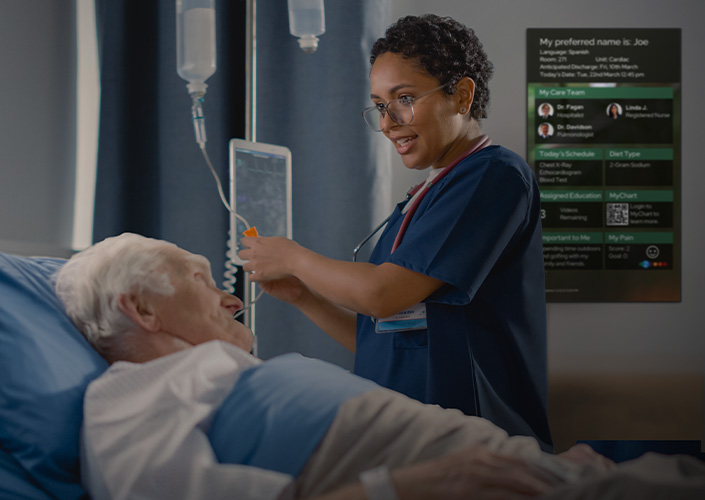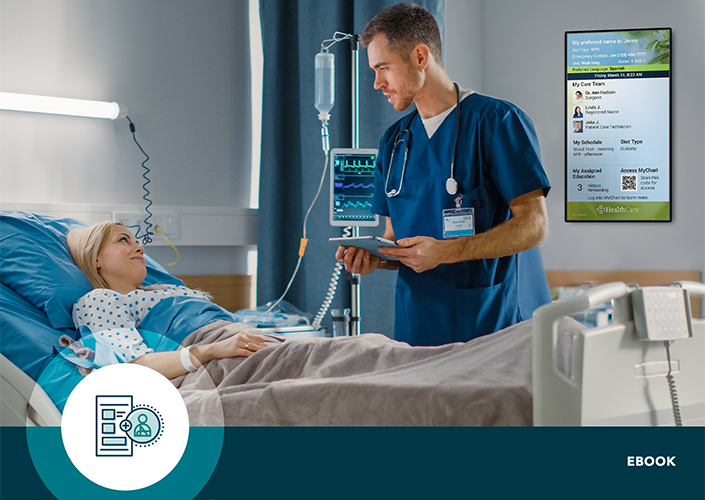What do nurses think of digital whiteboards?
It’s one thing to know the objective benefits of digital whiteboards.
But how do nurses—the people who use patient care boards the most—feel about them?
Our nursing executives have talked to hundreds of users and gotten feedback from nurses at hospitals of all sizes and specialties. Here’s what they’re saying.
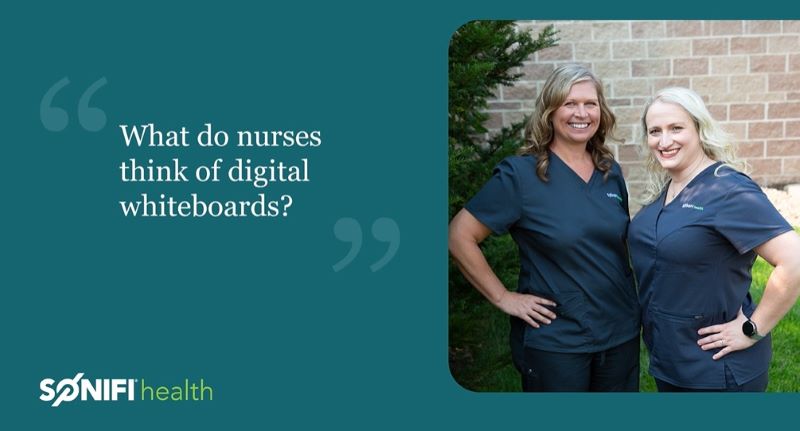
They’re relieved
Sometimes when we get on site for staff training, nurses aren’t aware that what displays on the digital whiteboard is coming from their charting and the documentation that they’re already doing in the patient’s EHR.
They think they’re going to have to log in to a separate portal to enter all that information. They’re thinking, “Oh, it’s just one more thing we have to do instead of going to the dry erase boards that we’re used to.”
So it’s a nice benefit to be able to tell nurses that the digital whiteboards will actually improve their charting efficiency, not add to their workload, because of those automations from EHR integrations.
This relief and anticipation can be key to staff adoption.
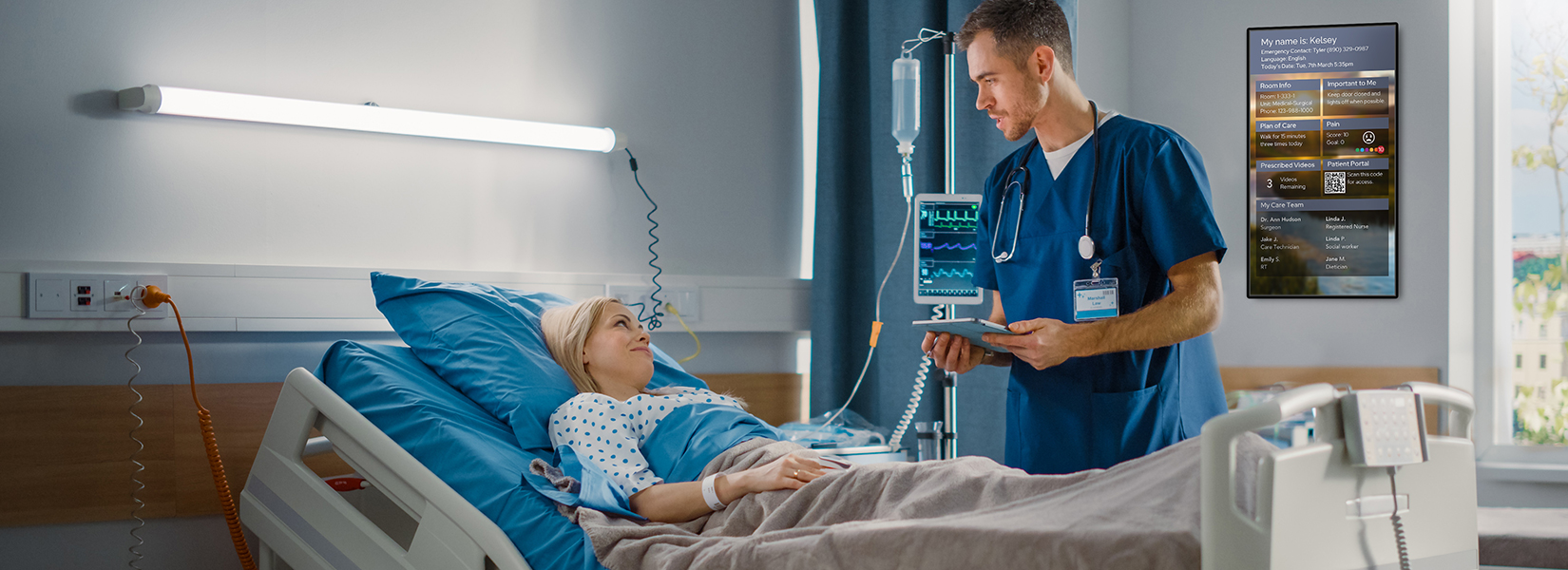
They’re saving time
With dry erase boards that are in many hospital rooms, it can add up to a significant amount of time to go look up information and go update it on the board every time something changes.
When you think about all the patients a nurse has on their unit, it could take 30 minutes just to update those boards as you’re coming on shift. Not to mention the additional updates every time you round.
Since digital whiteboards are completely fed from the EHR, it’s really a huge time savings to not have to make those manual updates in addition to what they’re already charting.
It’s all automatically updated, taking out those additional steps they used to have in their workflows for updating the old dry erase boards.
They’re getting the right information
With dry erase boards, people may forget to update information because it’s just another step they’re tasked with doing. We’ve had staff go into patient rooms and see a nurse listed on the board that hasn’t been there in two days.
With digital whiteboards, though, anything you enter into the EHR is automatically updated on the display in patient rooms. So you know all the information there is always current and accurate.
This can be vitally important to patient safety, too. There’s not going to be a lag in any updates—say, if a patient becomes NPO—because the digital whiteboard will show that straight from the change made in the EHR.
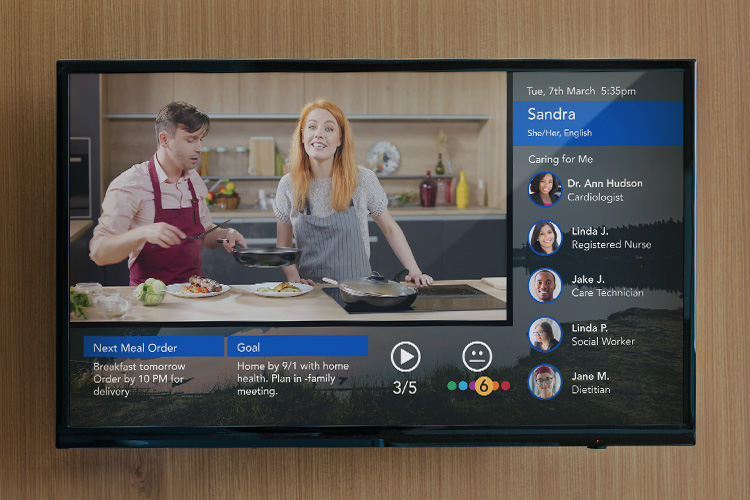
They’re clearer
There’s also the legibility factor when it comes to patient care boards.
Nurses are often in a hurry trying to update dry erase boards, and everyone’s handwriting is different, which can sometimes be difficult to decipher. You can’t always read what it says, which could become a safety issue in addition to just looking messy and unprofessional.
When you have a digital board optimized for readability—for both patients and clinicians—it makes those elements of communication so much clearer. It’s very easy to read, and it’s always going to have the correct information in clear view.
They’re safer
Every nurse is always thinking about infection prevention in a hospital.
Those old dry erase boards need markers that are being touched by who knows how many hands. Little kids in the room will often go up and start drawing on the board. And the eraser for the board is just the perfect target to trap germs.
So by eliminating all of those elements from the room, it actually helps with infection prevention.
Stay connected
Get exclusive insights delivered to your inbox from our experts.
